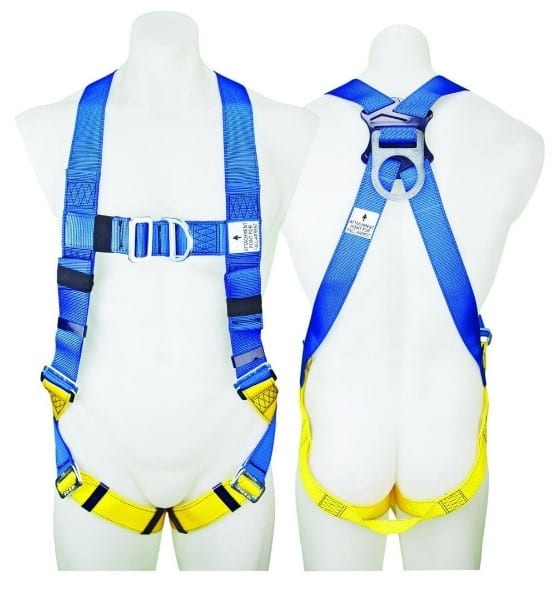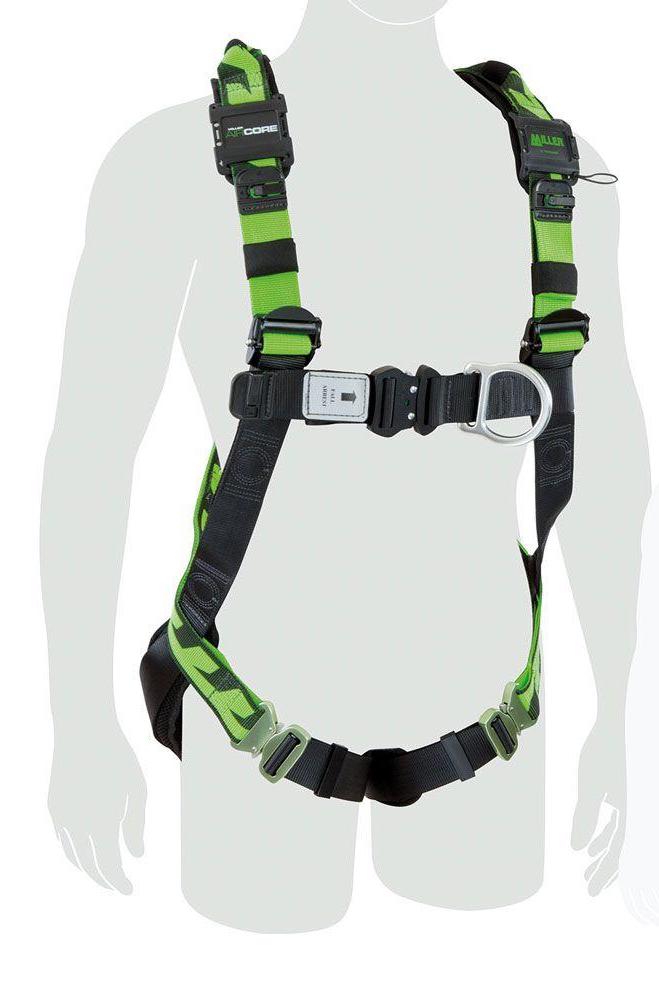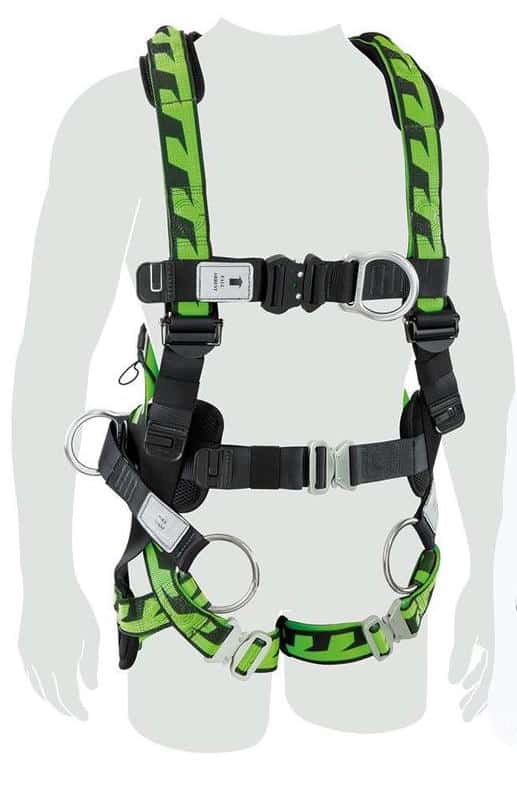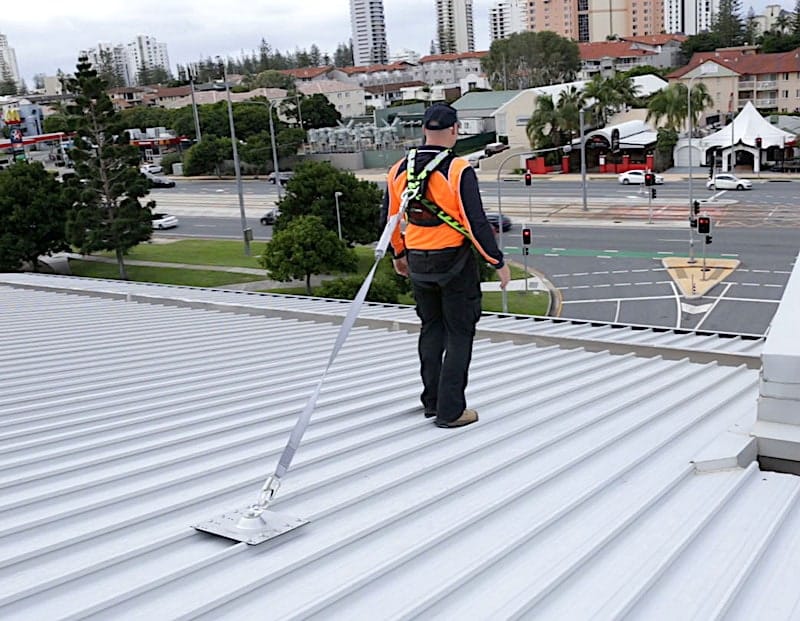Welcome to our Online Height Safety Store
BELOW IS A RANGE OF OUR PRODUCTS, BUT WE CAN SUPPLY ANY BRAND OR TYPE YOU NEED, SO IF YOU CAN’T SEE THE ONE YOU ARE WANTING PLEASE GIVE US A CALL.
HOW TO CHOOSE THE CORRECT HEIGHT SAFETY HARNESS
This is a question we are asked almost everyday. There are so many different types of roofing harnesses also known as fall arrest harnesses that it can be difficult to choose what would be best for you and your circumstances. It doesn’t help that the difference in cost can be enormous. Many people when they initially look for a safety harness will see a basic harness for $90 and then see the same type of fall arrest harness for $400 and wonder why the massive difference in cost. Basically it comes down to comfort and usability. All safety harnesses must comply with AS1891.1 and be rated for fall arrest. So whether you go for a basic safety harness or top of the line will make little difference in safety, but what will make a massive difference is how it fits, feels and how comfortable it is when wearing it all day. Of course the more expensive ones also have great padding which of course in the event of a fall would provide additional support and protection. So that should also be taken into consideration.
Our install teams wear roofing harnesses all day every day and we have used them to trial our many different models. They are unbiased when it comes to brand and price because they are not loyal to a brand and we are supplying it to them so there is no cost considerations. They choose purely on comfort and usability and we can tell you they won’t touch the cheap ones. They all agree that if you are only wearing it for a short time, say maybe an hour a day, then the cheap one will do fine. But if wearing all day or having to get in and out of it on a regular basis then the better roofing harnesses are so far above the rest it is not worth even looking at the cheap ones. Our advice is to come in or our show room and try some on yourself. That way you can feel the difference before you make your decision.
HOW TO INSPECT AND PROPERLY FIT A ROOFING HARNESS
Correct inspection and fitting of a full body fall arrest harness and associated equipment is vital. During a fall, an incorrectly adjusted roof safety harness can cause major injuries.
Step one is to inspect the roofing harness compliance label and ensure that it is compliant and within its 10 year life.
The label must have the following information:
- Serial number
- Manufacturer
- information
- Date of manufacture
- Date to be removed from service, and
- Stated compliance with AS1891.1
If the label is missing or can no longer be read the roofing harness cannot be used. Next, ensure that the fall arrest harness has been certified.
Most roof safety harness inspectors will attach a small tag which has the next inspection date recorded. All height safety webbing based PPE, such as harnesses, lanyards and rope lines must be inspected and certified every 6 months. If the equipment is out of date, do not use it. Notify your supervisor and have the safety harness inspected.
Once you have verified that the safety harness inspection is within certification date, examine the equipment yourself, to ensure it has not been damaged since its last inspection and that it is fit for purpose.
Run your hands over each section of webbing, looking and feeling for any cuts, abrasions or damage. If you find any of these types of issues the equipment should be sent to a specialist for examination.
Check the metal fittings. Ensure that there is no rust, cracks, distortion or excessive wear
Once you are sure the equipment is fit for use, ensure all buckles are undone. Take the fall arrest harness and place it over your shoulders one at a time. Pull your leg straps through and connect the buckles.
HOW TO INSPECT AND PROPERLY FIT A ROOFING HARNESS
A correctly adjusted leg strap should allow you to slide your flat open hand under the webbing but not allow you to make a fist. It is very important that you fit and adjust your leg straps correctly. In the event of a fall most of the initial force will be absorbed through your legs and lower back. If your leg straps are too loose it will not allow the roofing harness to evenly distribute the force through your body. If this occurs, the likelihood of you being seriously injured is greatly increased.
With both leg straps adjusted, fasten the chest strap and pull tight.
Now complete a final check to ensure you have not missed anything. It is good practice to have your co-worker check over your fall arrest harness.
INSPECTING YOUR HEIGHT SAFETY EQUIPMENT
You must make the same evaluation of your attachment PPE as you have to your fall arrest harness. You need to,
- Inspect the identification label
- Ensure that the safety harness inspection has been certified within the last 6 months
- Inspect the webbing and hooks for damage
- When examining an adjustable rope line, pay careful attention to the rope grab adjuster. Ensure that it is clean and free from damage. Ensure that the adjuster operates freely and locks securely onto the rope when engaged.
- Carefully examine the rope looking for any cuts, abrasions, wear or damage.
Remember, it is your responsibility to ensure that the equipment you are about to use has been
- Certified and tagged
- In good working condition and
- Is fit for purpose
ROOFING HARNESS
There are a number of different names for a roofing harness.
Some people refer to it as a roof safety harness or fall arrest harness. But regardless of what you call it, when you are using it to attach to a fall arrest anchor point of static line, it must comply with AS1891.1 and be correctly rated as a full body fall arrest harness.
The reason this is so vitally important can be seen when you watch a demonstration that simulates a fall.
Click here to watch the demonstration.
As you can see, the force generated by the fall is enormous and the job of the fall arrest harness is to distribute this force across your body to minimise injury.
What the video also demonstrates, is the importance of including a shock absorber between you and your attachment point.
AS1891.1 states: “you must have an inline shock absorber between you and your attachment point that will limit the potential shock to under 600kg.”
This is not a “should have” or a “good idea”, this is mandatory.
Under no circumstances can you use a fall arrest system without having an inline shock absorber. In the event of a fall, without the correct equipment the force of arresting the fall will likely kill you even if you don’t hit the ground.
Did you notice the enormous difference to how much force was generated back through the dummy between using and not using a shock absorber?
This is the difference between surviving the fall or not.













